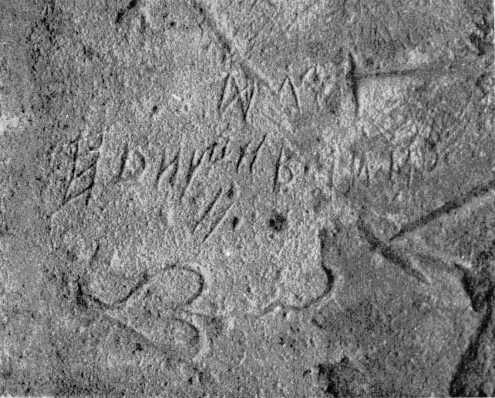 | ||
The Alsószentmihály inscription is an inscription on a building stone in Mihai Viteazu, Cluj (Transylvania, today Romania). The origins and translation of the inscription are uncertain.
Contents
The relic
The stone was an ancient Roman building stone—proved by the leaf-symbol, a frequently applied ornamental element of ancient Roman inscriptions—reused in the 10th century. Alsószentmihály located on the territory of the late Province Dacia existed up to the middle of the 3rd century. Dénes showed that the Khavars (Khazar rebels joined the Hungarians in the 9th century) probably settled in this region (that time Transylvania). In some parts of Hungary, there are data of the Khavars even from the 13th century.
Script used for the Alsószentmihály inscription
Some quotations from historian Gábor Vékony about the identification of the script in this inscription:
Based on the quotations above examples, it can be stated that Vékony identified the script of the Alsószentmihály relic as a Khazarian script. According to Vékony, another relic, namely the Homokmégy-Halom inscription contains Khazarian text as well.
The meaning of the inscription
The Alsószentmihály inscription was deciphered by archaeologist Gábor Vékony.
The transcription of Vékony (it uses IPA symbols):
According to Vékony, the inscription was made by a Khavar leader, whose religion was Karaite. The first symbol of the first row is a ligature, its transcription: atlïɣ. The first symbol (from left) in the second row is a Khazarian word separator.
In the inscription, the third symbol of the first row (from left), and the symbol in the second and last place can be considered as the descendants of the Turkic ideograms. Nevertheless, their relation needs more evidence.
Critics, alternative theories
There are several critics of Vékony's theories and translations, most notably the Hungarian linguist and historian, András Róna-Tas. The debates were summarized by István Riba in 1999 and 2000.
